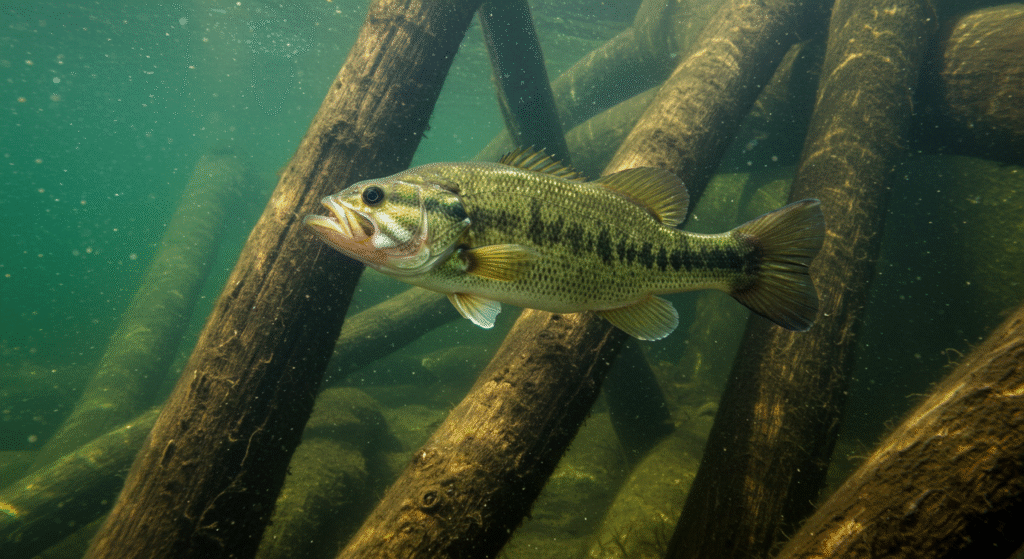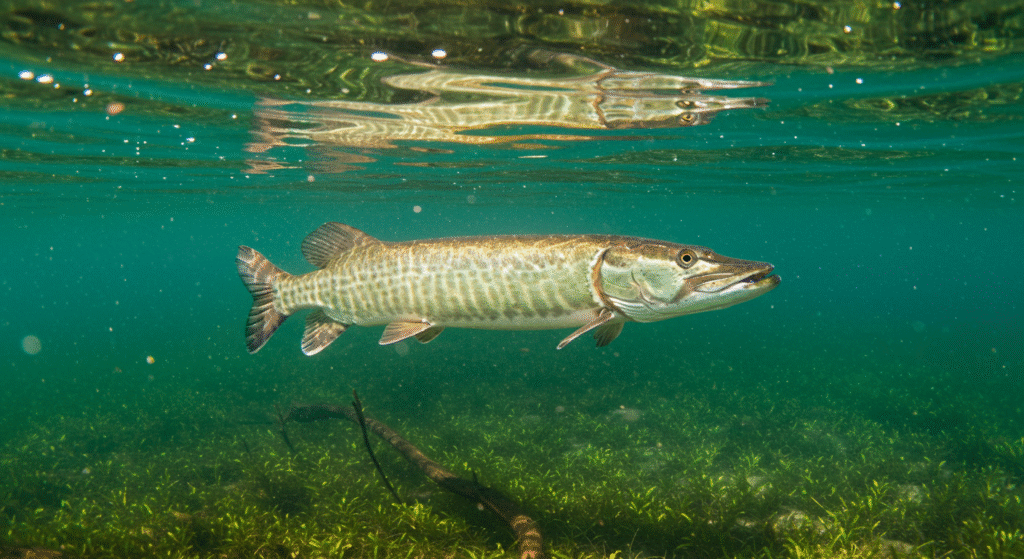Seasonal Secrets to Fishing Like a Pro
Fishing is an activity that can be enjoyed year-round, but the best season for fishing can depend on the species of fish that you are targeting. Different fish species have different feeding patterns, migration patterns, and preferred water temperatures, so it’s important to know which season is best for targeting each species.
Tailoring Your Fishing Tactics Based on Seasonal Changes
Bass Season
Bass fishing is one of the most popular types of freshwater fishing in North America. There are two types of bass: largemouth bass and smallmouth bass. Both species can be caught year-round, but the best time to catch them depends on the location and the water temperature.
In the spring, largemouth bass spawn in shallow water, making it an excellent time to target them with a variety of lures and techniques. The best time to catch largemouth bass is during the pre-spawn, spawn, and post-spawn periods. During the pre-spawn period, bass will be feeding heavily to build up energy for the upcoming spawn. During the spawn, bass will be in shallow water, making them easier to target. During the post-spawn period, bass will be moving back to deeper water, but they will still be feeding heavily.

In the summer, bass will move to deeper water where the temperature is cooler, and fishing in the early morning or late evening is typically the most productive. During the summer, fishing in the early morning or late evening can be more productive than during the day, as the water temperature is cooler and the bass are more active. Fishing with topwater lures early in the morning or late in the evening can be particularly effective.
In the fall, bass will move back to shallow water to feed before winter, and fishing with topwater lures can be particularly effective. During the fall, the water temperature will be cooling down, making the bass more active and aggressive.
Smallmouth bass are typically found in cooler water than largemouth bass, so they can be more difficult to catch in the summer. Spring and fall are the best seasons for smallmouth bass fishing, as they will move to shallower water to feed during these times.
Trout Season
Trout fishing is a popular activity in both freshwater and saltwater. Trout can be caught year-round, but the best time to target them depends on the species and the location.
Rainbow trout are typically found in streams and rivers, and they can be caught year-round. In the spring, they will spawn in shallow water, making it an excellent time to target them with nymphs and dry flies. In the summer, they will move to deeper, cooler water, making it necessary to fish deeper with wet flies and streamers. In the fall, rainbow trout will move back to shallow water to feed, making it an excellent time to fish with dry flies and nymphs.
Brown trout are typically found in colder water than rainbow trout, and they can be more difficult to catch in the summer. Spring and fall are the best seasons for brown trout fishing, as they will move to shallower water to feed during these times.
Walleye Season
Walleye are a popular freshwater game fish that can be found in lakes and rivers throughout North America. The best time to catch walleye depends on the season and the location.
In the spring, walleye will move to shallow water to spawn, making it an excellent time to target them with jigs and live bait. In the summer, walleye will move to deeper water where the temperature is cooler, making it necessary to fish deeper with jigs and spinners. In the fall, walleye will move back to shallow water to feed before winter, and fishing with live bait can be particularly effective.
Salmon Season
Salmon fishing is a popular activity in both freshwater and saltwater. Salmon can be caught year-round, but the best time to target them depends on the species and the location.
Chinook salmon are typically found in coastal waters, and they can be caught year-round. In the summer, they will move to deeper water, making it necessary to fish with downriggers and flashers. In the fall, chinook salmon will move closer to shore to spawn, making it an excellent time to fish with lures and bait.
Coho salmon are typically found in streams and rivers, and they can be caught year-round. In the fall, they will move to shallower water to spawn, making it an excellent time to fish with lures and bait.
Muskie Season
Muskie, also known as musky or muskellunge, is a popular freshwater game fish that can be found in lakes and rivers throughout North America. The best time to catch muskie depends on the season and the location.
In the spring, muskie will move to shallow water to spawn, making it an excellent time to target them with jerkbaits and live bait. During the spring, muskie will be in shallow water, making them easier to target. Fishing with jerkbaits early in the morning or late in the evening can be particularly effective.

In the summer, muskie will move to deeper water where the temperature is cooler, making it necessary to fish deeper with jerkbaits and spinners. Fishing with jerkbaits early in the morning or late in the evening can be particularly effective.
In the fall, muskie will move back to shallow water to feed before winter, and fishing with bucktails and topwater lures can be particularly effective. During the fall, the water temperature will be cooling down, making the muskie more active and aggressive.
Catfish Season
Catfish are a popular freshwater game fish that can be found in lakes and rivers throughout North America. The best time to catch catfish depends on the season and the location.
In the spring, catfish will move to shallow water to spawn, making it an excellent time to target them with live bait and cut bait. During the spring, catfish will be in shallow water, making them easier to target. Fishing with live bait and cut bait can be particularly effective.
In the summer, catfish will move to deeper water where the temperature is cooler, and fishing with stink bait or cut bait can be particularly effective. Fishing at night can also be more productive in the summer, as catfish are nocturnal and more active during the night.
In the fall, catfish will move back to shallow water to feed before winter, and fishing with live bait, cut bait, or stink bait can be particularly effective. During the fall, the water temperature will be cooling down, making the catfish more active and aggressive.
In the winter, catfish will move to deeper water where the temperature is more consistent, and fishing with live bait or cut bait can be particularly effective. Fishing in deeper pools or near underwater structures can increase your chances of catching catfish in the winter.
Striper Season
Striper, also known as striped bass, is a popular game fish that can be found in saltwater and freshwater environments throughout North America. The best time to catch striper depends on the season and the location.
In the spring, striper will move to shallow water to spawn, making it an excellent time to target them with lures and live bait. During the spring, striper will be in shallow water, making them easier to target. Fishing with topwater lures, swimbaits, or live bait can be particularly effective.
In the summer, striper will move to deeper water where the temperature is cooler, and fishing with live bait, cut bait, or lures that mimic baitfish can be particularly effective. Fishing at night can also be more productive in the summer, as striper are nocturnal and more active during the night.
In the fall, striper will move back to shallow water to feed before winter, and fishing with lures that mimic baitfish can be particularly effective. During the fall, the water temperature will be cooling down, making the striper more active and aggressive.
In the winter, striper will move to deeper water where the temperature is more consistent, and fishing with live bait or lures that mimic baitfish can be particularly effective. Fishing near underwater structures or drop-offs can increase your chances of catching striper in the winter.
Adapting to the Seasons: A Guide to Fishing Year-Round
Knowing the best season for catching fish can increase your chances of having a successful fishing trip. While there are no guarantees in fishing, understanding the feeding patterns and migration patterns of these species can help you make more informed decisions about when and where to fish.
It’s important to note that fishing regulations can vary by location and season, so make sure to check your local fishing regulations before heading out on the water. Additionally, always practice ethical fishing practices, such as catch and release or taking only what you need.
